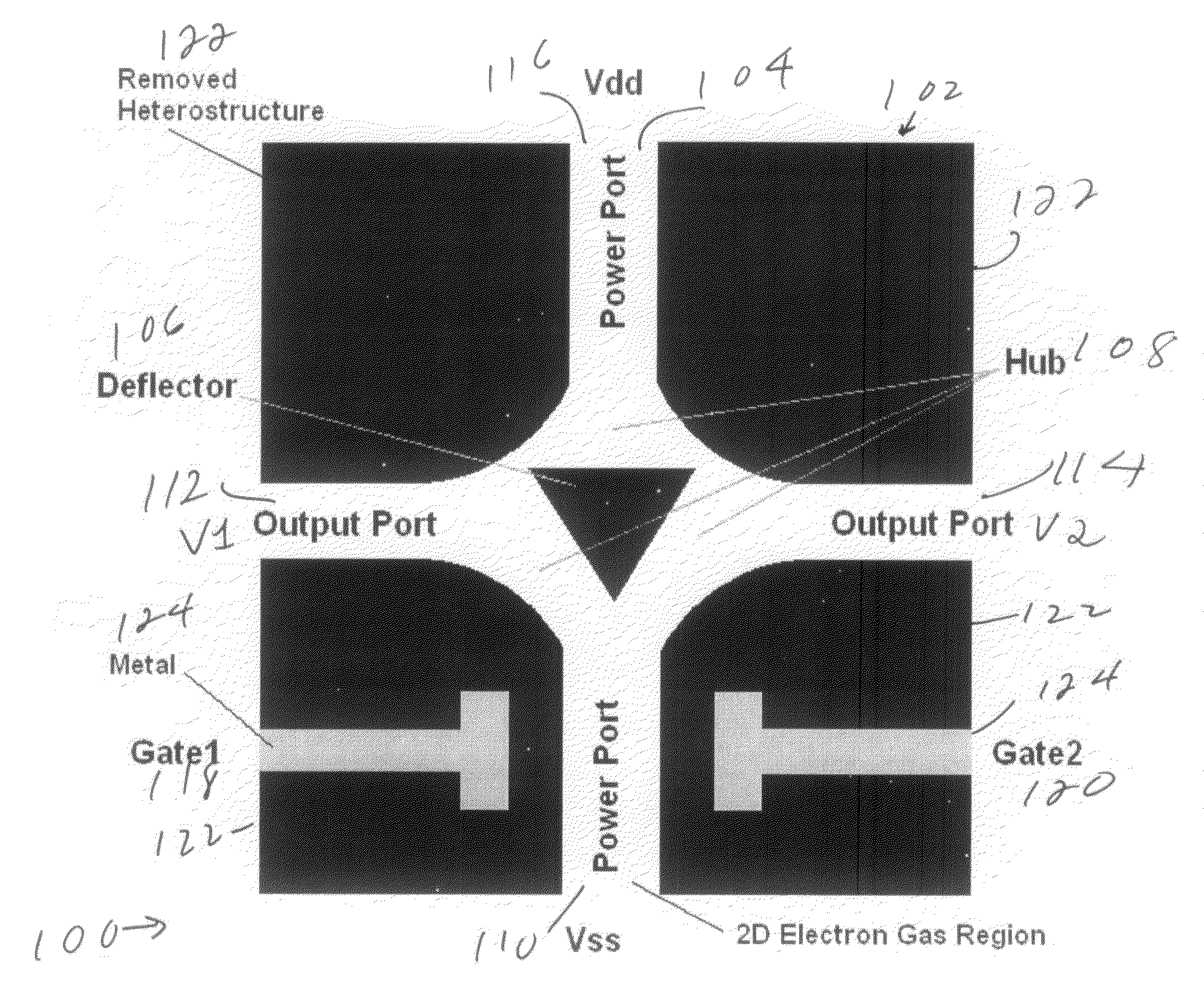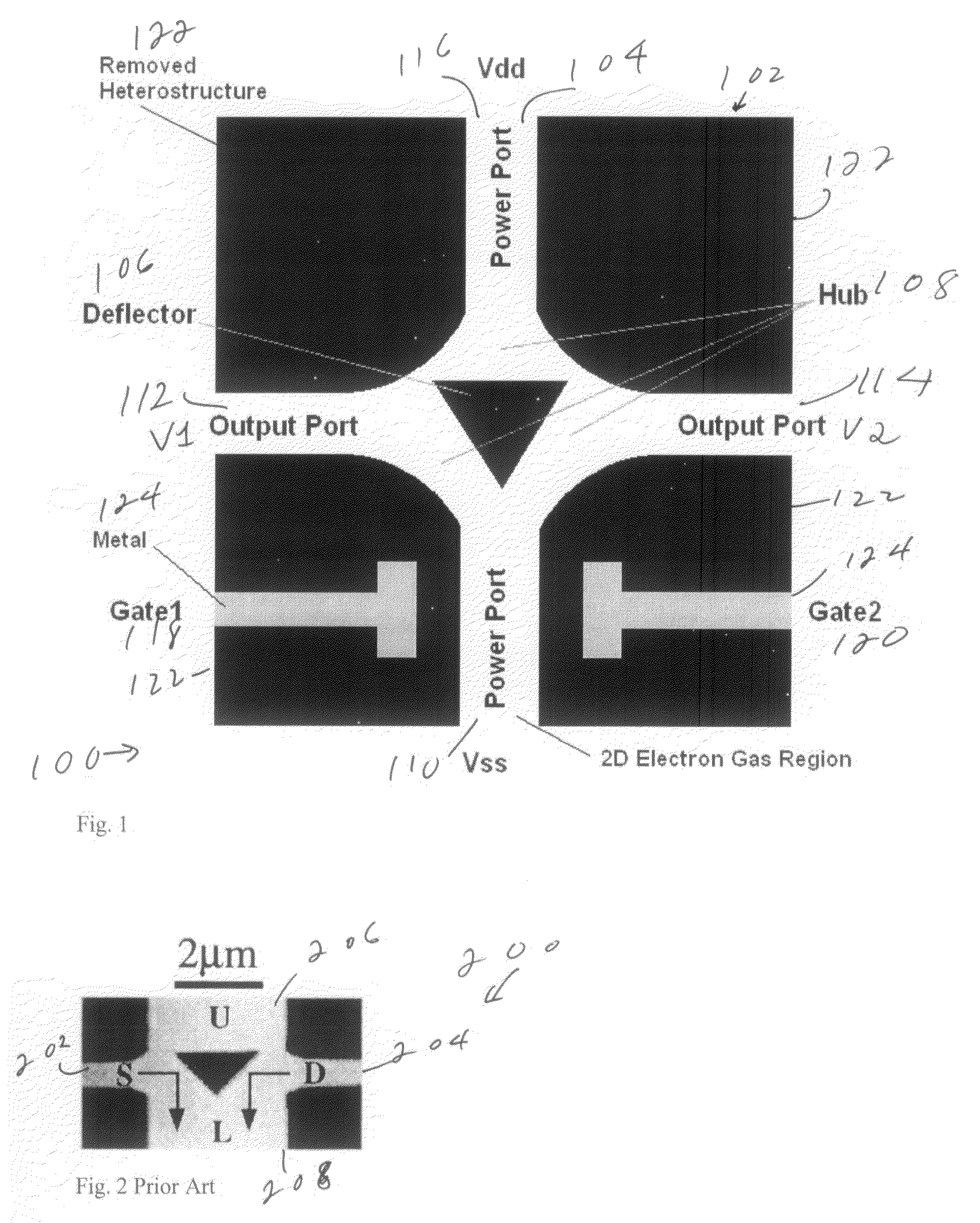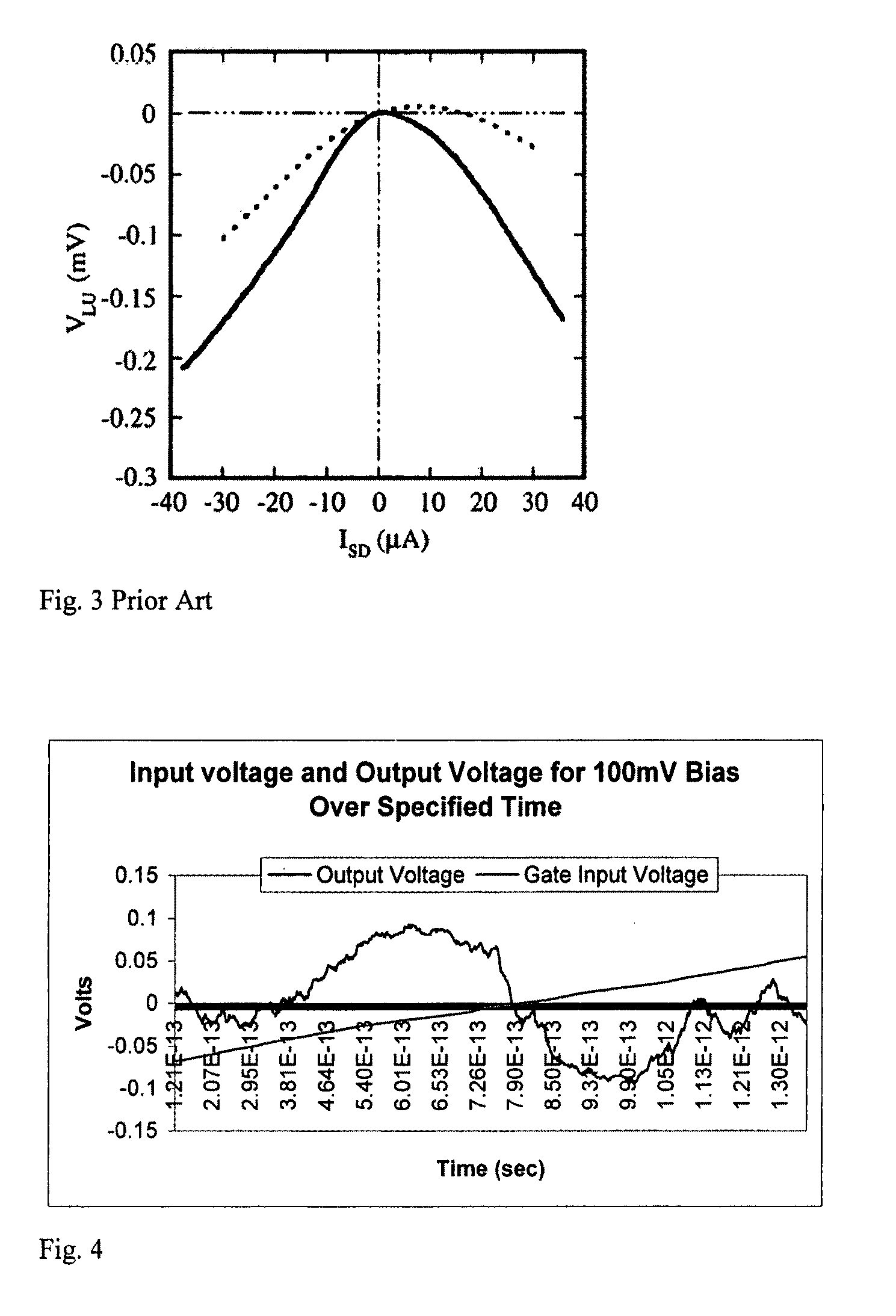Ballistic deflection transistor and logic circuits based on same
a transistor and ballistic deflection technology, applied in the field of transistors, can solve the problems of limiting the frequency of capacitors, requiring cooling, and less useful at room temperature, and achieve the effects of reducing power consumption, reducing noise, and reducing power consumption
- Summary
- Abstract
- Description
- Claims
- Application Information
AI Technical Summary
Benefits of technology
Problems solved by technology
Method used
Image
Examples
Embodiment Construction
[0041]Preferred embodiments of the present invention will now be set forth in detail with reference to the drawings, in which like reference numerals refer to like elements throughout.
[0042]A preferred embodiment of the invention is shown in FIG. 1, where a transistor 100 is fabricated by etching a structure of given width and height and thickness into an InP substrate 102 and doping the structure such that a quantum well 104 composed of InGaAs—InP or InGaAs—AlGaAs enables the formation of the deflective structure 106, hub 108 and ports 110, 112, 114, 116. Gates 118, 120 are preferably formed by the application of two parallel strips of conductive material near the Vss port 110, preferably near the hub 108, in parallel to the Vss port 110. Another way to form the gates 118, 120 is by isolating semiconductor by an etch so as to isolate the gate regions from the channel regions. The ports and gates have conductive contacts, such as metal contacts, that connect the transistor to power ...
PUM
 Login to View More
Login to View More Abstract
Description
Claims
Application Information
 Login to View More
Login to View More - R&D
- Intellectual Property
- Life Sciences
- Materials
- Tech Scout
- Unparalleled Data Quality
- Higher Quality Content
- 60% Fewer Hallucinations
Browse by: Latest US Patents, China's latest patents, Technical Efficacy Thesaurus, Application Domain, Technology Topic, Popular Technical Reports.
© 2025 PatSnap. All rights reserved.Legal|Privacy policy|Modern Slavery Act Transparency Statement|Sitemap|About US| Contact US: help@patsnap.com



